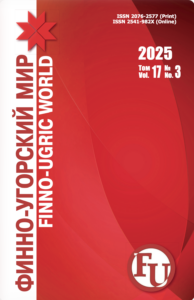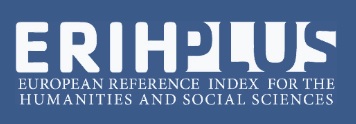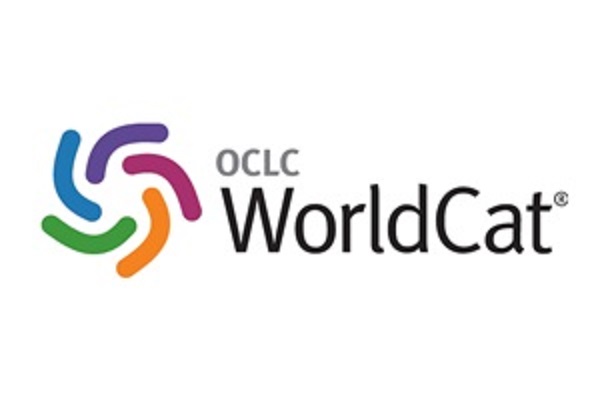Original article
https://doi.org/10.15507/2076-2577.017.2025.01.067-079
EDN: https://elibrary.ru/sjwiwc
УДК / UDC 332.1(470.22)
Religious Dynamics in Border Regions in the Context of Interfaith and External Relations (Based on Materials from the Republic of Karelia, 1940–1980s)
L. I. Vavulinskaya, S. E. Yalovitsyna
Institute of Language, Literature and History, Karelian Research Centre of the Russian Academy of Sciences, Petrozavodsk, Russian Federаtion
Abstract
Introduction. The religious policy of the Soviet atheist state underwent several transformations between the 1940s and the 1980s. The religious “thaw” of the early post-war years was replaced by renewed pressure on the Church in the late 1950s. In Karelia, these processes had distinct characteristics shaped by its borderland position, proximity to Finland, and the presence of Finnish Lutherans within the republic’s population. At the same time, Karelia was traditionally regarded as a region with a predominance of Orthodox believers, which led researchers to focus primarily on the Orthodox history of the area. This article aims to examine the impact of Karelia’s borderland status on the region’s religious landscape.
Materials and Methods. The article is based on newly introduced archival documents from the State Archive of the Russian Federation and the National Archive of the Republic of Karelia. Additionally, it draws on materials from documentary collections and local literature addressing issues of religious life in the republic during the second half of the 20th century. These sources provide a well-substantiated perspective on state-church and interfaith relations in Karelia. The study’s methodological framework incorporates both general scientific methods (systems approach, the principle of historicism, analysis and synthesis, generalization) and specialized historical methods (historical-genetic, chronological, and historical-comparative approaches).
Results and Discussion. The interconnection between state-church relations and the republic’s border location was identified, which led to heightened vigilance by the authorities regarding the activities of various religious communities and a desire to use the church to shape a positive image of the USSR on the international stage. A distinctive feature of external relations with Finland was the involvement not only of Lutheran representatives but also of Orthodox clergy, which strengthened interfaith cooperation. The unified anti-religious orientation of policy during the 1940s to 1980s allowed different denominations to perceive each other more as allies than theological rivals, using their presence on the international stage as a means of exerting pressure on the domestic government.
Conclusion. The article explores the role of an external factor that significantly influenced the religious situation in a border region, offering a better understanding and evaluation of the outcomes of the state’s overall policy and its evolution during the 1940s to 1980s. The assessment of the impact of the growing influx of foreign tourists in the 1970s on the religious landscape appears to be especially relevant, as does the consideration of the topic within the context of the retrospective turn in Soviet culture (interest in church architecture, iconography, etc.). Further research into this issue could be pursued through a more in-depth study of the religious practices of the population and the internal dynamics of religious organizations, areas of increasing interest due to the upcoming 800th anniversary of the Christianization of the Karelians in 2027.
Keywords: Karelia, borderland, Russian Orthodox Church, Lutheranism, interfaith contacts, peacekeeping activities, atheistic state
Funding: The research was carried out within the framework of the state task of the ILLH KarRC RAS (№124022000029-0).
Conflict of interest: The authors declare no conflict of interest.
For citation: Vavulinskaya L.I., Yalovitsyna S.E. Religious Dynamics in Border Regions in the Context of Interfaith and External Relations (Based on Materials from the Republic of Karelia, 1940–1980s). Finno-Ugric World. 2025;17(1):67–79. https://doi.org/10.15507/2076-2577.017.2025.01.067-079
Information about the authors:
Ljudmila I. Vavulinskaya, Cand.Sci. (Hist.), Senior Researcher, Institute of Language, Literature and History, Karelian Research Centre of the Russian Academy of Sciences (11 Pushkinskaya St., Petrozavodsk 185910, Russian Federation), ORCID: https://orcid.org/0000-0001-6404-7551, SPIN-код: 2326-9197, ludvav@mail.ru
Svetlana E. Yalovitsyna, Cand.Sci. (Hist.), Senior Researcher, Institute of Language, Literature and History, Karelian Research Centre of the Russian Academy of Sciences(11 Pushkinskaya St., Petrozavodsk 185910, Russian Federation), ORCID: https://orcid.org/0000-0001-5024-6357, SPIN-код: 6690-1995, jalov@yandex.ru
Authors’ contribution:
L. I. Vavulinskaya ‒ conducting the research process, including collecting data; creating and preparing the manuscript: writing a draft of the manuscript, providing comments and corrections by members of the research team.
S. E. Yalovitsyna ‒ ideas; formulation or evolution of overarching research goals and aims; development of methodology; oversight and leadership responsibility for the research activity planning and execution, including mentorship external to the core team; preparation and creation of the published work by those from the original research group, specifically critical review, commentary or revision – including pre- or post-publication stages.
All authors have read and approved the final manuscript.
Submitted 04.09.2024; revised 27.11.2024; accepted 02.12.2024.






















